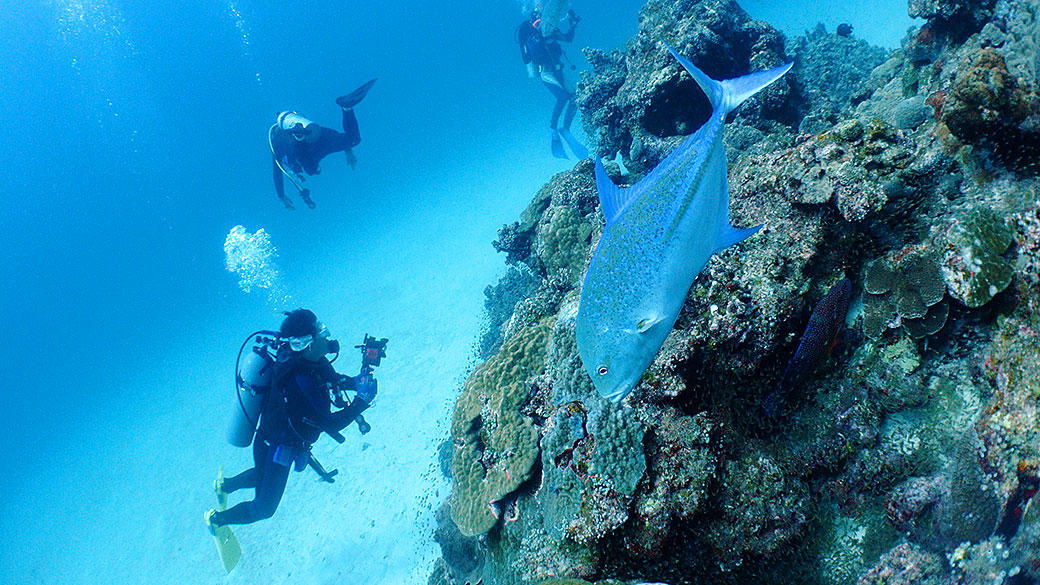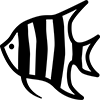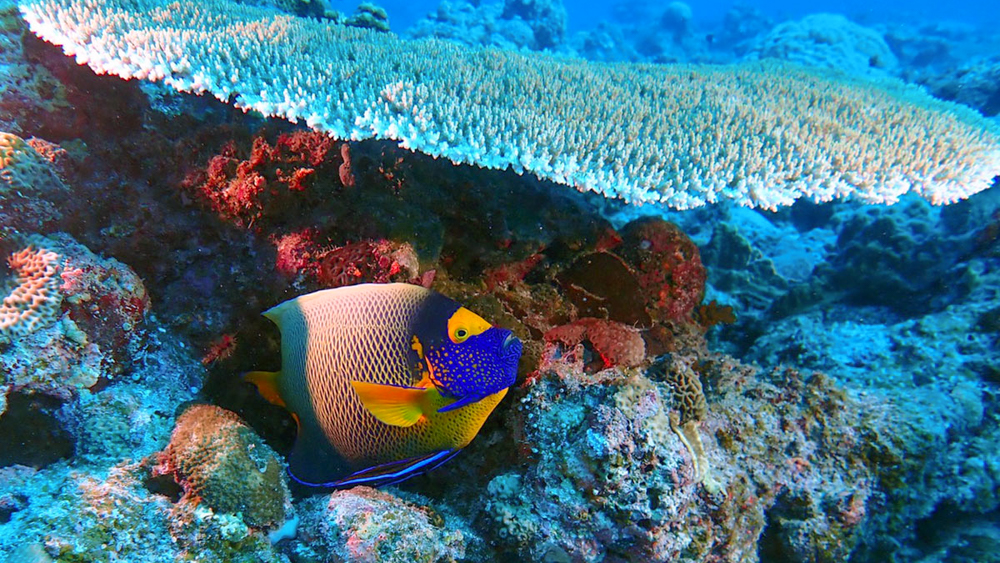
Sea creatures often seen
Green turtle 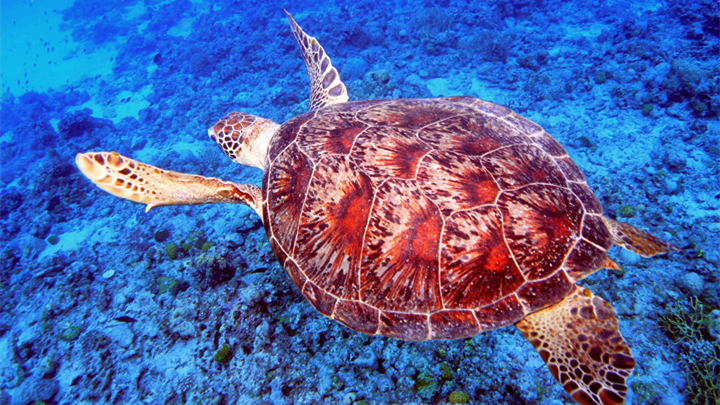
RARITY:
WHERE: Kamekichi, sand triangle, 7 banzaki etc.
They usually sleep under rocks or corals during low tides. Sea turtles are very common in the Keramas.
Broadclub cuttlefish 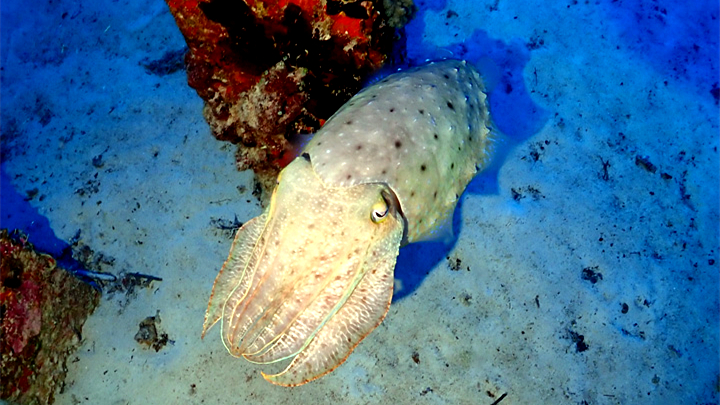
RARITY:
WHERE: Sand triangle, Paraiso, 7 banzaki, Hizushi, etc.
Squids can surpass 50cm in size! You can find them in shallow waters between winter and spring.
Clown anemonefish 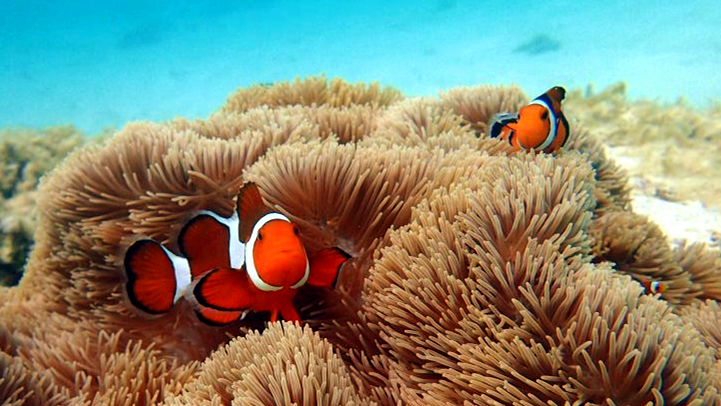
RARITY:
WHERE: Sand triangle, Aliger cable, Toma No2 etc.
They have 3 distinctive stripes on their body. Watching them swim around sea anemones is somehow relaxing!
Golden sweeper 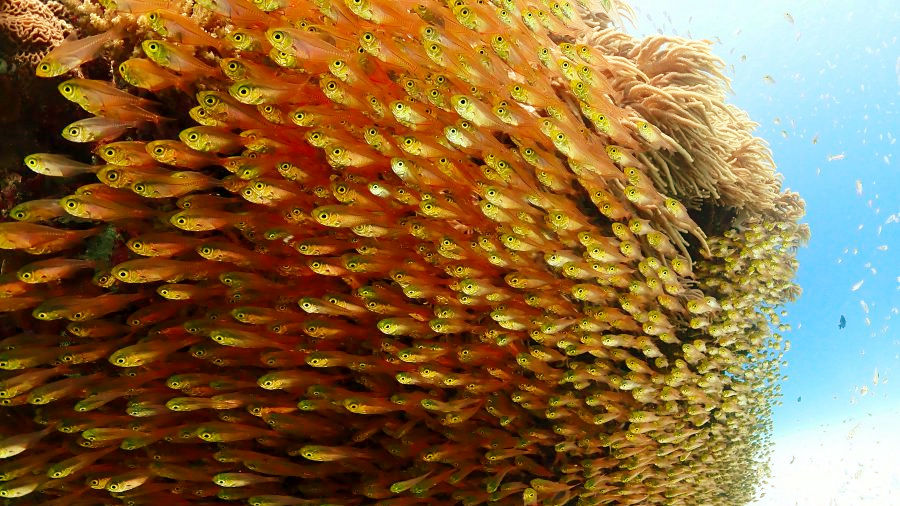
RARITY:
WHERE: Kamigusuku, Drango lady, Triple stone etc.
Usually swarming around corals and rocks. Schools of golden sweepers make for a mesmerizing sight because of their golden color: they look just like shooting stars in the ocean!
Swallowtail cardinalfish 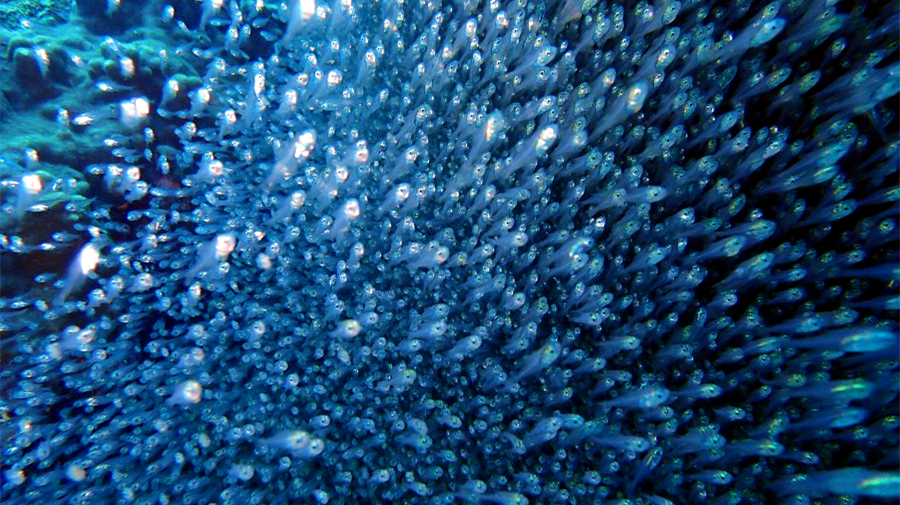
RARITY:
WHERE: Toma No2, Dragon lady, Triple stone etc.
You can see their bones through their half transparent bodies. The sunlight glows upon their skin and create a very beautiful seascape.
Hawksbilll turtle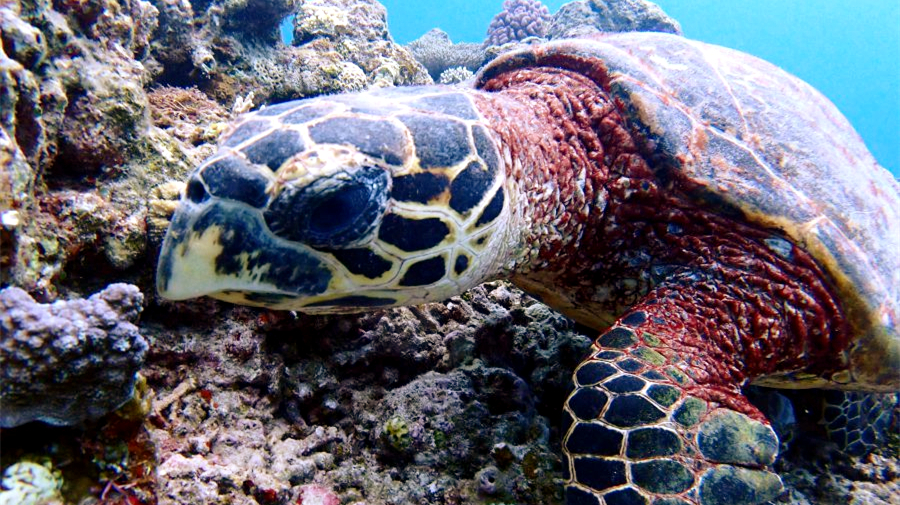
RARITY:
WHERE: Giship, Sand triangle, Hizushi etc.
At some sites, it is almost impossible not to see them! Usually not shy by nature, these turtles let swimmers get close to them rather easily.
Garden eel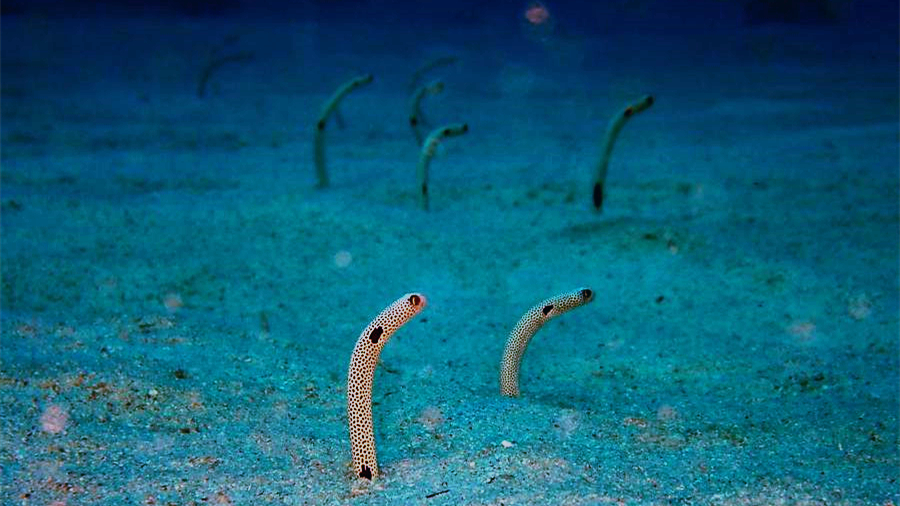
RARITY:
WHERE: Toma No.2, Aliger cable, Gragon lady
Their littles heads poking out from the white Okinawan seabed is a popular sight for Japanese divers. But do not get too close or they will start hiding!
Red-spotted blenny 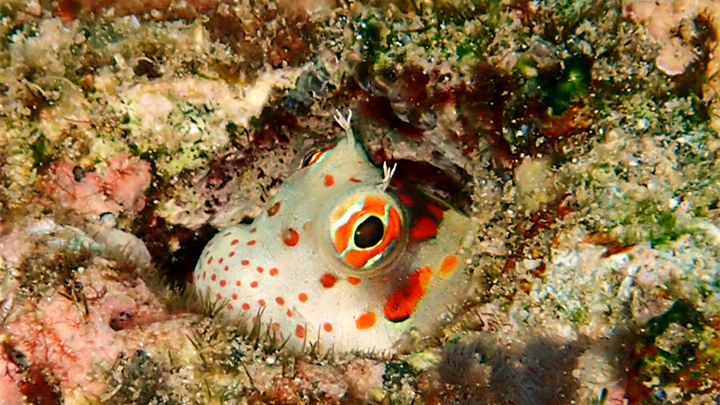
RARITY:
WHERE: Chishi, Yakabi tunnel etc.
Frogfishes are small and stocky. They hide in a small hole on a rock or corals. The orange dots on their face is very charming and very recognizable.
Yellowtail clownfish 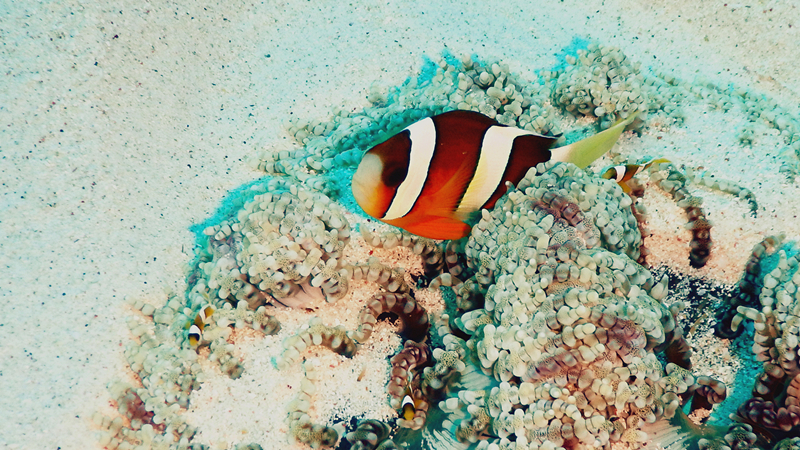
RARITY:
WHERE: Everywhere
This is the most popular kind of anemonefish among all 6 species. They have 2 distinctive white stripes on their body.
Double-lined fusilier 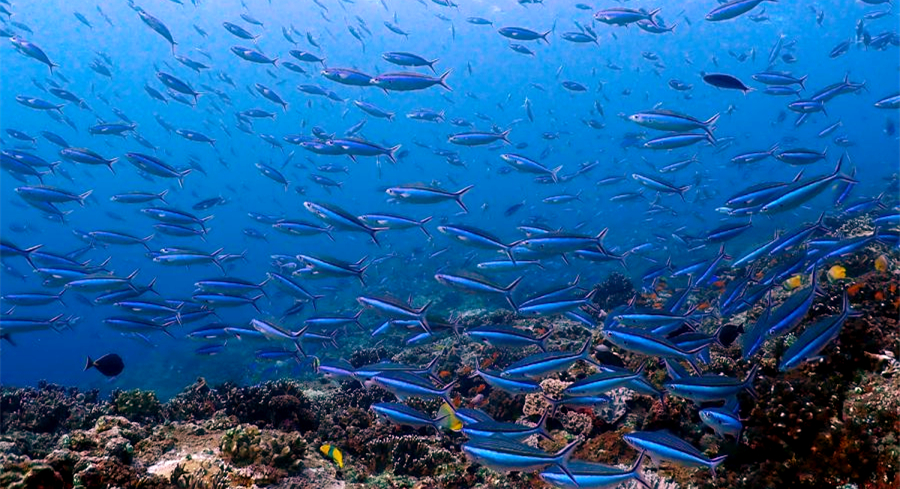
RARITY:
WHERE: Everywhere
A typical Okinawan fish commonly found in local restaurants. They don’t stand out much, but can offer a nice spectacle when they swim in very large groups.
Micro sea animals
Boxer crab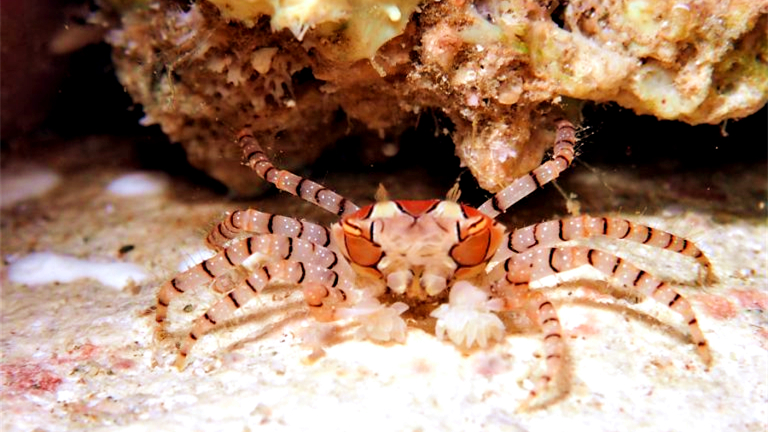
RARITY:
WHERE: Susaki、Chishi、Nanaban zaki
Hiding under boulders. It has sea anemones on its scissors and can prevent predation from foreign enemies. That makes him look like a cheerleader!
Samla bicolor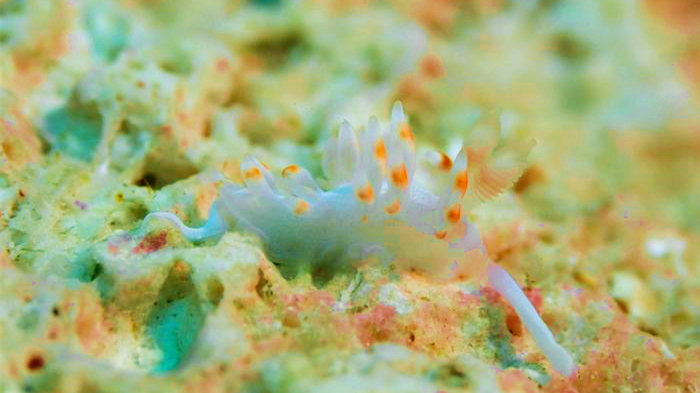
RARITY:
WHERE: Corals, rocks
A whitish blue Glaucus with a 1 cm long body. It is the fastest sea slugs species existing and is really difficult to shoot in focus.
Yellow boxfish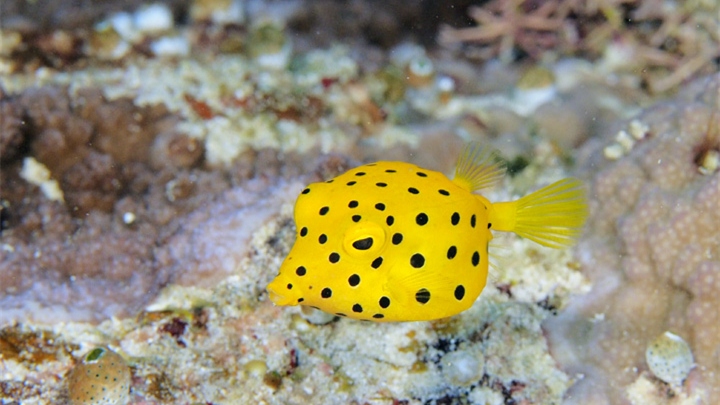
RARITY:
WHERE: Paraiso, Aliger, Ohsone
Baby yellow boxfish look different from their adult appearance. Young yellow boxfish have black spots on their yellow bodies and look really cute underwater!
Bicolour parrotfish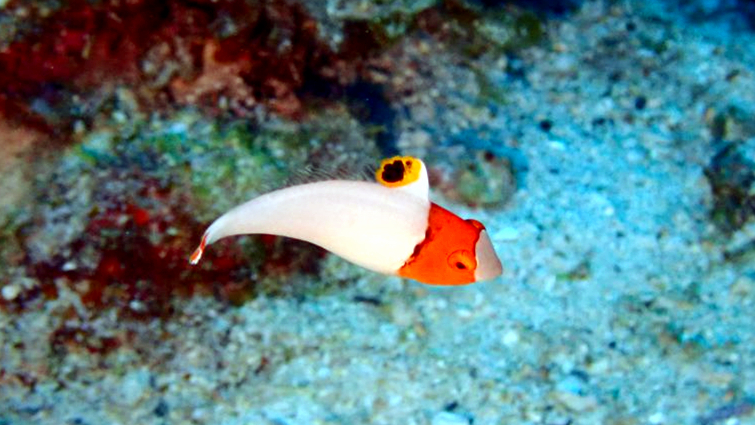
RARITY:
WHERE: Anywhere
Parrot fish change appearance when they become adults. The juvenile ones can be recognised by their red heads. It is also commonly consumed in Okinawan restaurants.
Tropical fish species
Sea goldie 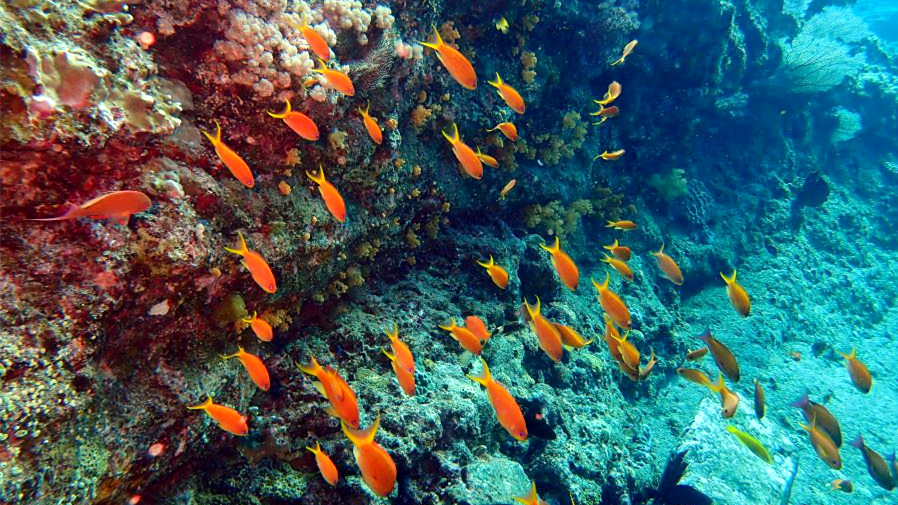
RARITY:
WHERE: Kuroshima twin rocks, Shizuru etc
Recognisable by its bright orange colour, the Sea goldie is known for forming harems. It is a hermaphrodite: they can transform from female to male.
Red-toothed triggerfish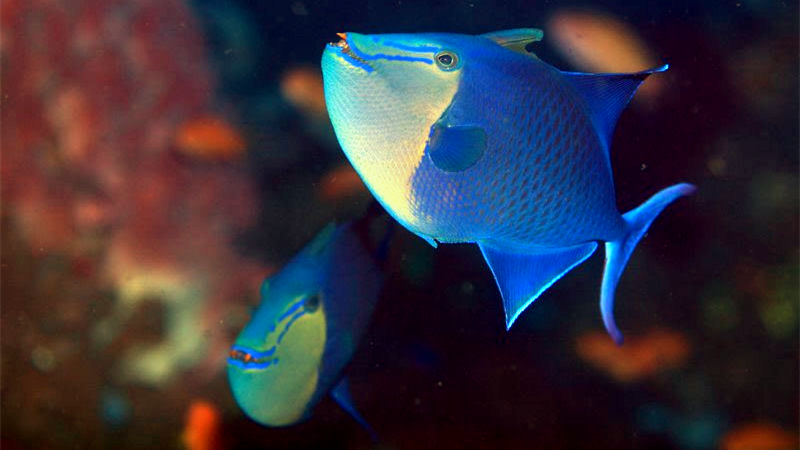
RARITY:
WHERE: Kuroshima twin rocks, Shizuru, Susaki, Otokoiwa
They gather at sites with strong currents. They belong to the black Triggerfish family and are about 30 cm long. Their teeth are red colored.
Red lionfish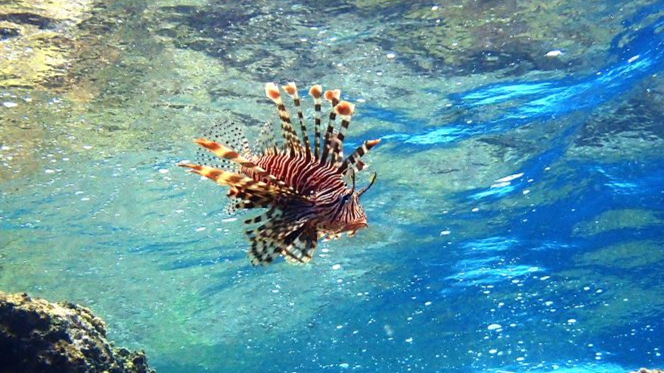
RARITY:
WHERE: TomaNo.2, Dragon lady, Triple stones, Yakara
This scorpion fish species is remarkably gorgeous! The spines on its dorsal fins are poisonous. It is often found at the roots of corals where small fish swarms in flocks.
Red-bar anthias 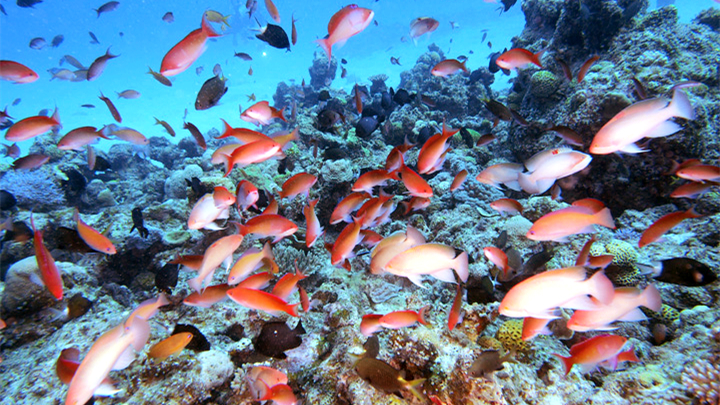
RARITY:
WHERE: Uchizan, Toma No1, Ohsone
It is a member of the Anthiinae subfamily, characterized by its deep red color. It forms harems like all anthiinaes.
Pyramid butterflyfish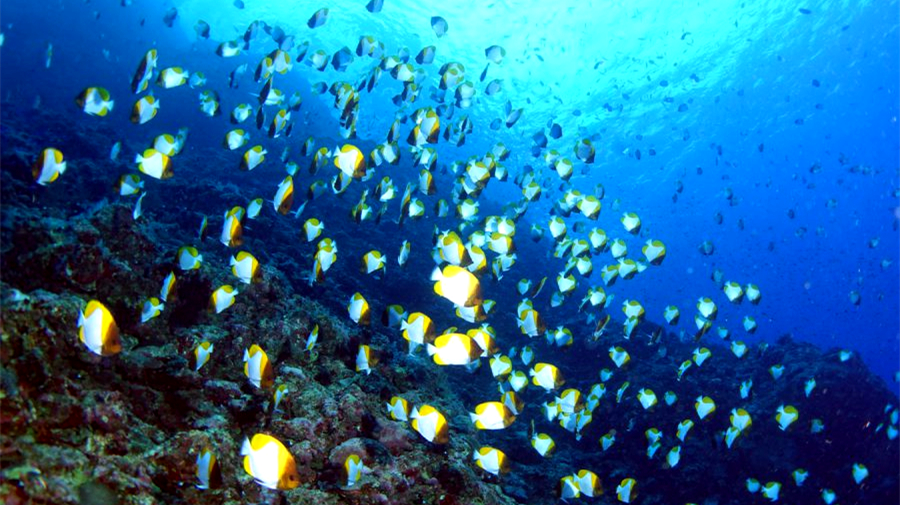
RARITY:
WHERE: Shizuru, Susaki, Uchakashi
A species of butterflyfish of beautiful white and orange colors. They form big schools at sites with strong currents.
Stocky anthias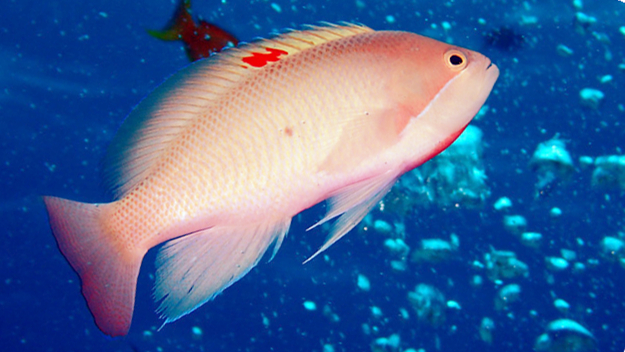
RARITY:
WHERE: Toma No.1、Ohsone
A pink-colored Anthiinae. In Japan, it was first discovered in the Kerama Islands, so the Japanese name contains “Kerama” in it.
Blue green damselfish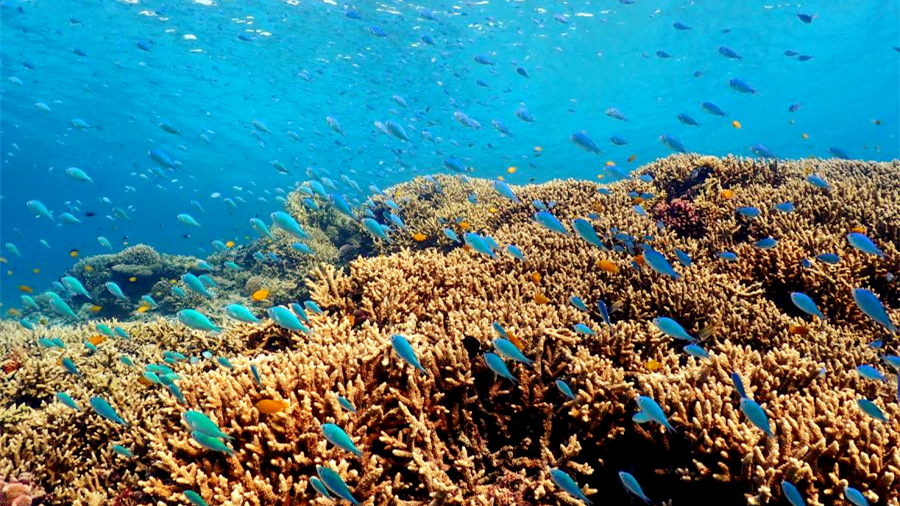
RARITY:
WHERE: Kuefu north, Toma No2, Nozaki, Ohsone
A light blue fish that gather around branch corals. If they are vigilant, they will escape into the coral all at once when you approach them. The contrast between the fish and corals’ colors is striking.
Amethyst anthias 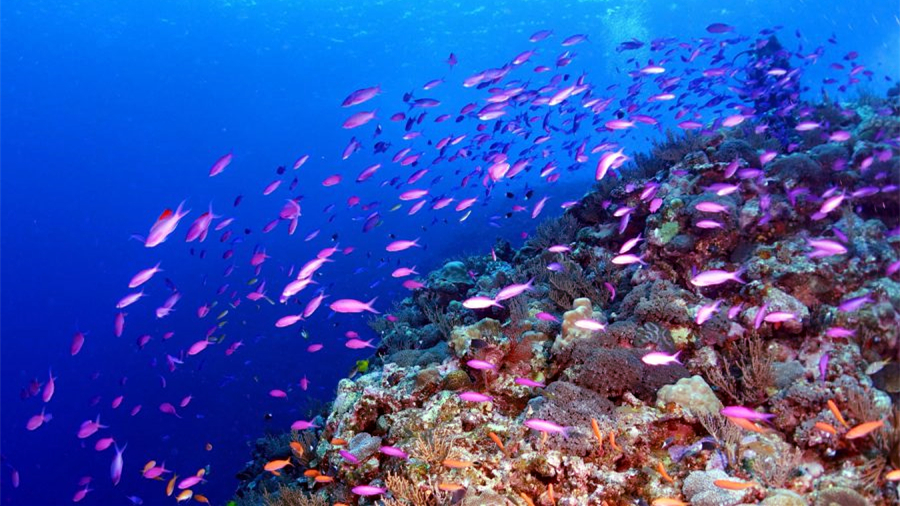
RARITY:
WHERE: Kuroshima north twin rocks, Shizuru etc
An anthias of a bright bluish purple color that is known to form harems. It can also turn from female to male.
Rare species
Orange-striped shrimpgoby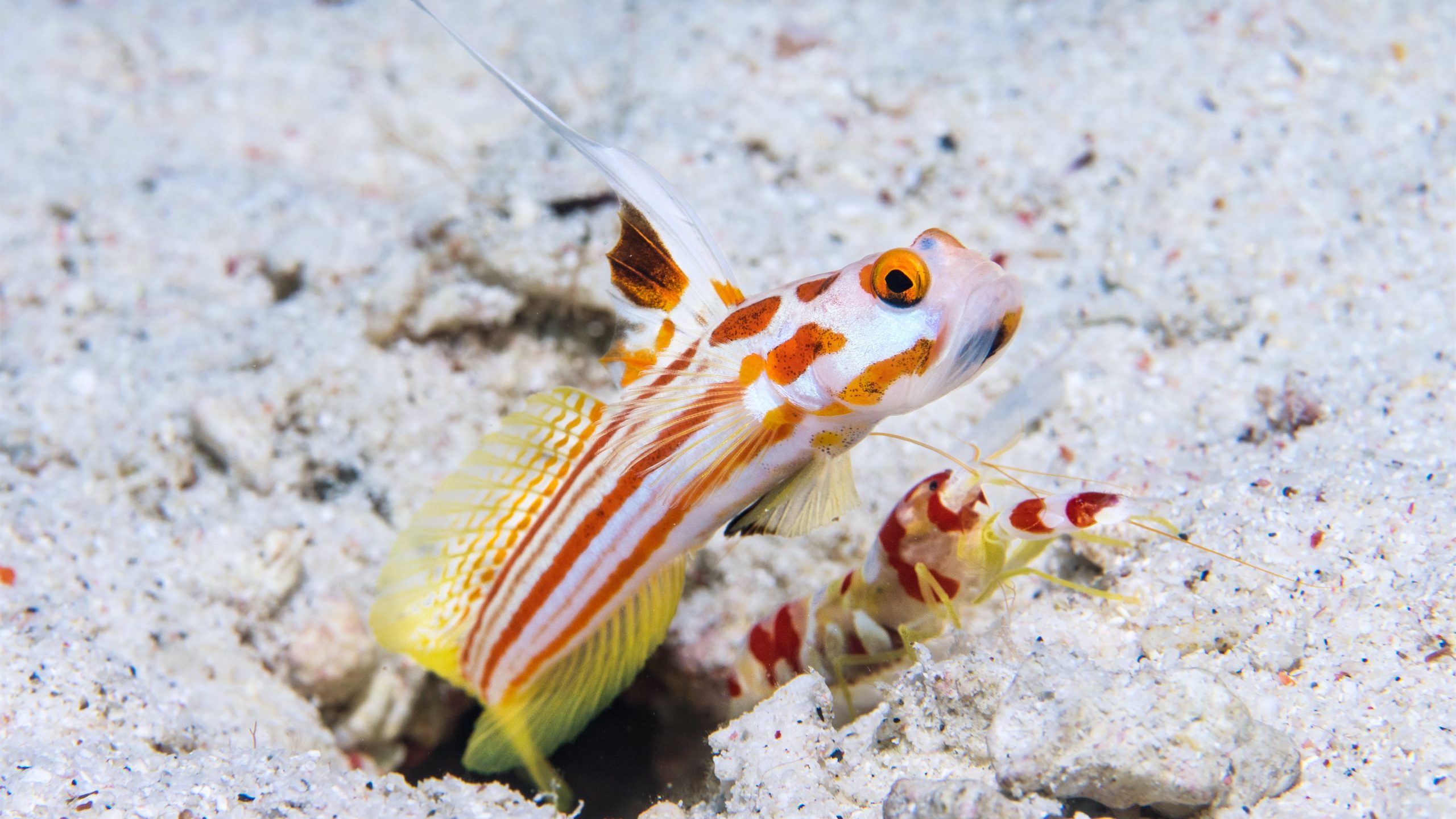
RARITY:
WHERE: Ohsone
This type of goby has a white body with orange stripes. It coexists with pistol shrimps, which create burrows in sandy areas. If they feel danger, they will hide in these holes.
Painted frogfish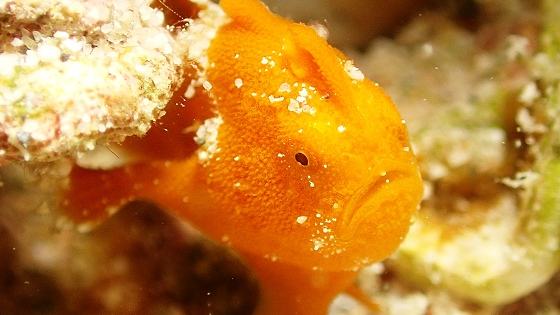
RARITY:
WHERE: Toma No.2、Dragon lady
Small painted frogfish can be found at sandy points during winter. They come in various colours such as orange, green, yellow and black.
Alfred manta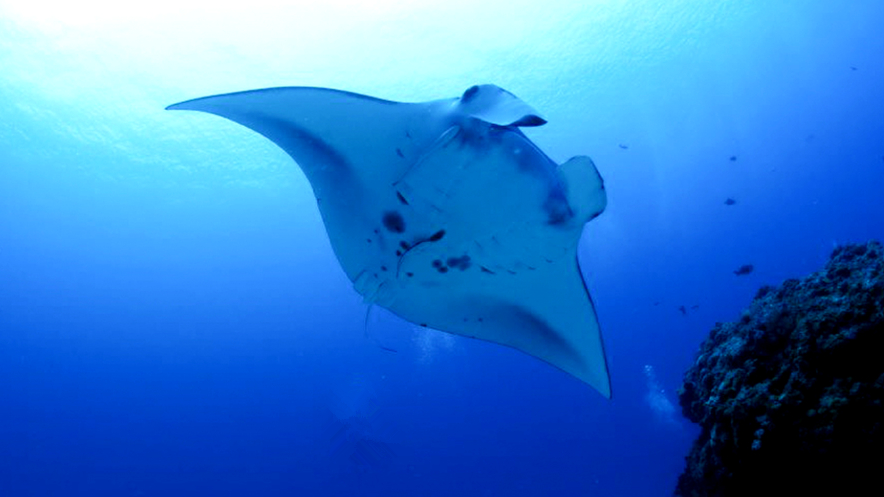
RARITY:
WHERE: Uchizan
We spot them the most in Uchizan in September and October. You can observe them hovering when they gather for their cleaning.
Dogtooth tuna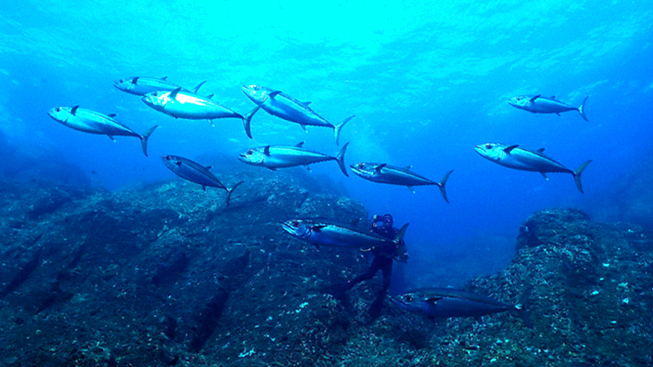
RARITY:
WHERE: Kuroshima north twin rocks, Kamigusuku, Twin towers etc
They are often found in the open ocean at sites with strong currents. They always swim in rows.
Whitetip reef shark 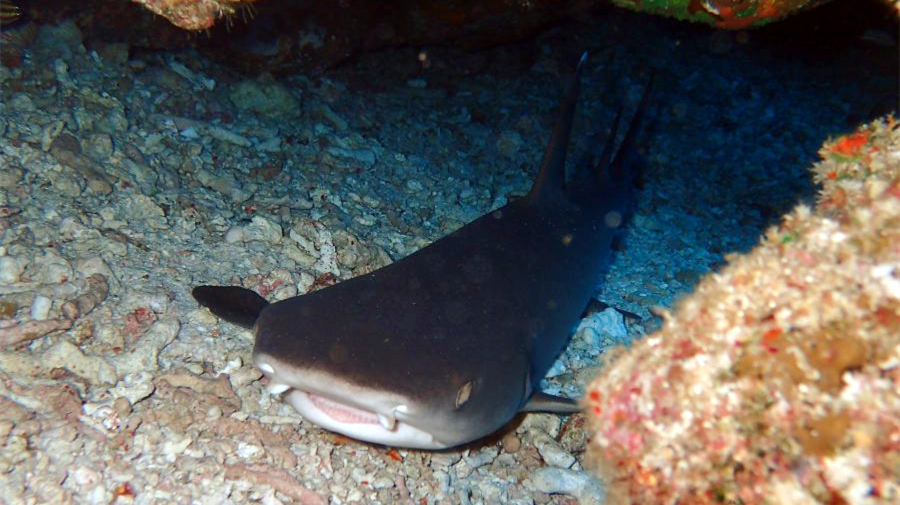
RARITY:
WHERE: Kuroshima north twin rocks, Twin towers etc
You might see them swimming, but they are most often see still in tunnels and caves. They tend to run away if approached.
Leaf scorpionfish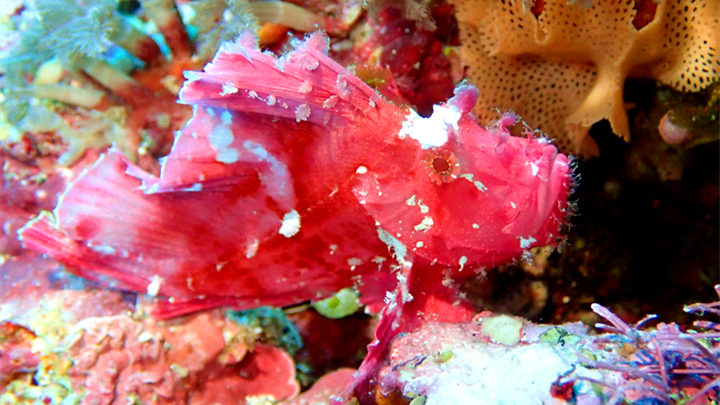
RARITY:
WHERE: Toma No.2、Nozaki、Aliger、Triple stones
This scorpionfish mimics fluttering leaves. There are of various colours such as green, orange, white, black, and pink.
Ribbon eel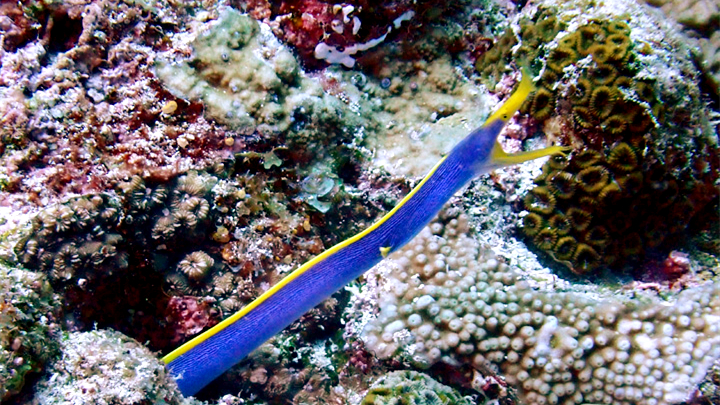
RARITY:
WHERE: Uchizan, North hirase, Meoto iwa
You can spot them sticking their heads out of their holes. When they go out of them, they look like a ribbon used in rhythmic gymnastics. They change body colour from black to blue to yellow as they grow up.
Pygmy seahorse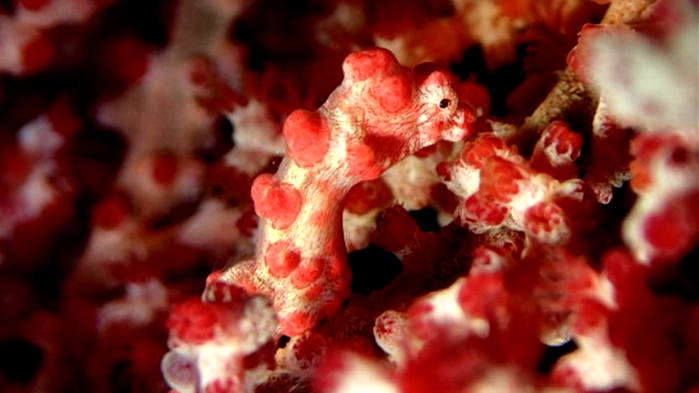
RARITY:
WHERE: Kuroshima north twin rocks、Otoko iwa, Uchakashi、Tacchu etc
They can reach a maximum length of 1 cm. They usually attach themselves to a pink sea fan at about 20 meters deep in the sea and mimic the coral’s branches.
Giant trevally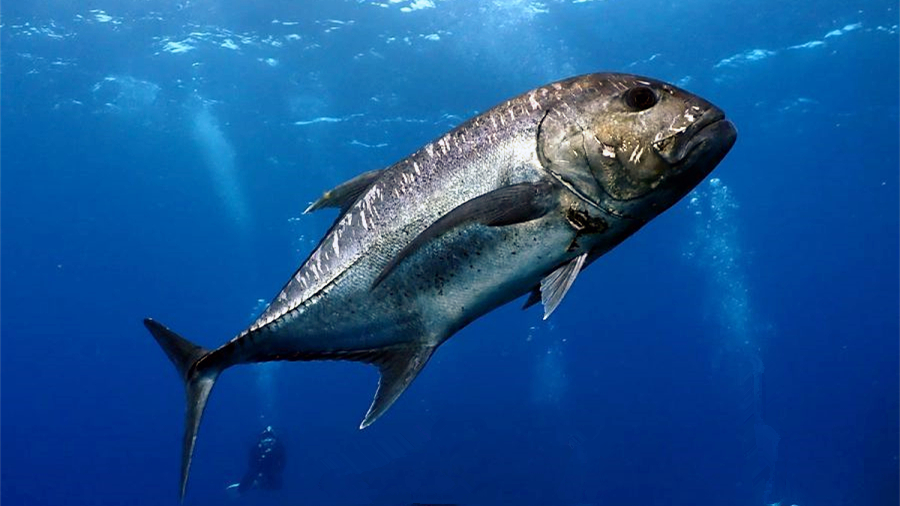
RARITY:
WHERE: Uchizan, Shimosone
This large horse mackerel can reach a maximum of 1.5 meter in length. They sometimes come and swim around divers.

